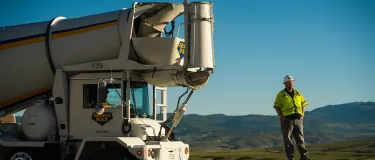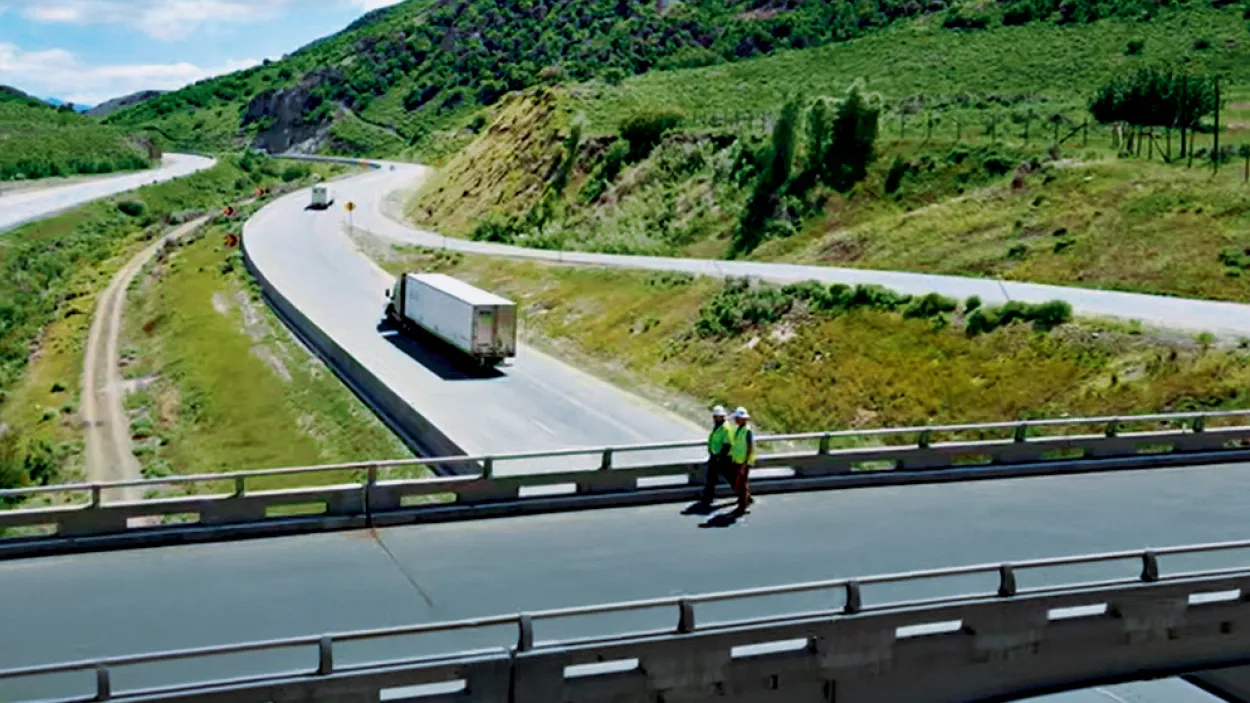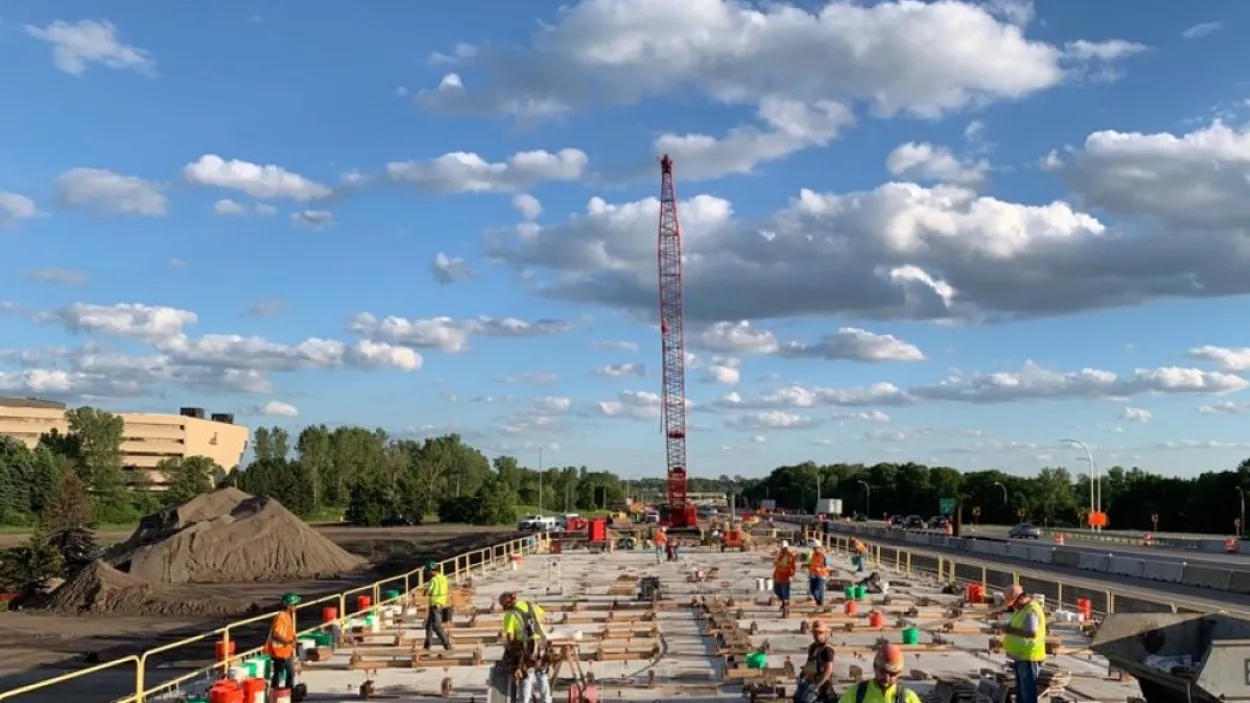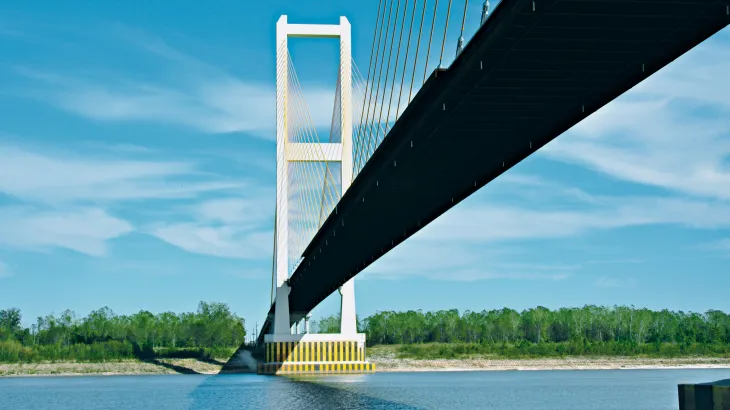Elevating the Long-Term Durability and Sustainability of Interstate 80 in Utah with OneCem® Portland Limestone Cement
By: Todd Laker
Designated as one of the original routes of the Federal Highway System, Interstate 80 is one of the country’s most heavily traveled transcontinental freeways. Though this strategically important highway continues to provide efficient movement of people and goods, thousands of miles require rehabilitation or reconstruction due to age, natural forces and ever-increasing traffic levels. How we address these system preservation needs is critical to reducing the carbon footprint of this vital infrastructure.
The Challenge
Constructed in 1956, I-80 is the major east-west corridor for truck commerce in Utah, making it vital to the state’s growing economy. A top priority of the Utah Department of Transportation (UDOT)—one that faces ongoing challenges presented by the area’s climate, varying elevations and increasing population growth—is ensuring that 190 miles of this important asset across the state are built correctly and well maintained.
As part of the state’s “Renovate I-80” campaign, UDOT determined that a mountainous stretch of I-80 through Silver Creek Canyon was failing to withstand increased heavy vehicle loads and harsh weather conditions. The roadway’s asphalt pavement was placed in the 1960’s and repaved many times over the years to address persistent problems. Much of the rutting and cracking was caused by heavy-duty truck traffic and frequent freeze/thaw cycles at the 6,400-foot elevation.
Due to the duress of the asphalt pavement, the state was concerned that this 7.5-mile section of I-80 would not make it through another winter and fast-tracked its reconstruction. Accelerated schedules, unpredictable weather and limited access to work zones created challenges that would require tremendous collaboration among project partners.
The Solution
To “Keep Utah Moving” along this harsh stretch of I-80, UDOT decided to rebuild all four lanes with a more durable and sustainable rigid pavement that would require far less maintenance. Rather than bringing in new road-base materials, the project would rely on a 4-inch partial-depth reclamation (PDR) and recycling of the asphalt—stabilized with cement—to create a sturdy foundation for a 12-inch concrete overlay with a designed service life of 40 years.
Based on the need to fast-track construction while minimizing impacts to the traveling public, the plan called for the eastbound lanes to be rebuilt in the fall of the first year of the project and the westbound lanes to be constructed in the spring of the following year. With a short window to complete the eastbound work before winter set in, Geneva Rock Products used Type II/V Portland cement in stabilizing the recycled asphalt base and for producing the concrete overlay. This traditional concrete paving mix also included 25 percent Class F fly ash.
To further reduce the carbon footprint of the westbound lanes, the project team relied on the more environmentally friendly OneCem® Portland Limestone Cement (PLC). This Type IL blended cement provides equivalent performance to ordinary Portland cement in terms of concrete workability, set time, durability, and strength development. Because the product uses less clinker, CO2 emissions are reduced by up to 10 percent per ton of cement. With 16,000 tons of cement needed for rebuilding the westbound lanes, the sustainability advantages of making the change from Type II/V to Type IL were significant.
The Results
Upon the project being completed on time and on budget, UDOT was extremely pleased with the speed and sustainable construction of the long-lasting pavement on one of the state’s most crucial corridors. Through a combination of innovative construction techniques and materials, the durable concrete reduces life-cycle costs due to lower maintenance requirements in the area’s harsh environment.
This project embodied the true spirit of sustainability. In addition to the pavement’s light reflectance properties for enhancing safety and reduced rolling resistance for improving fuel economy, PDR of the asphalt reduced the need for virgin raw materials and landfilling waste materials. Innovative concrete design and cementitious materials also significantly lowered the roadway’s environmental impact.
The OneCem PLC mixes incorporating fly ash lowered the carbon footprint of the westbound lanes by as much as 35 percent from traditional concrete paving mixes. According to Cody Preston, concrete paving manager for Geneva Rock, the durability, strength and workability of the OneCem concrete paving mix performed similar to the traditional concrete paving mix. “Our paving operators and finishers didn’t even know we made the change,” said Preston. “We are proud to be using this sustainable mix as it is big a step forward in lowering our carbon footprint"









